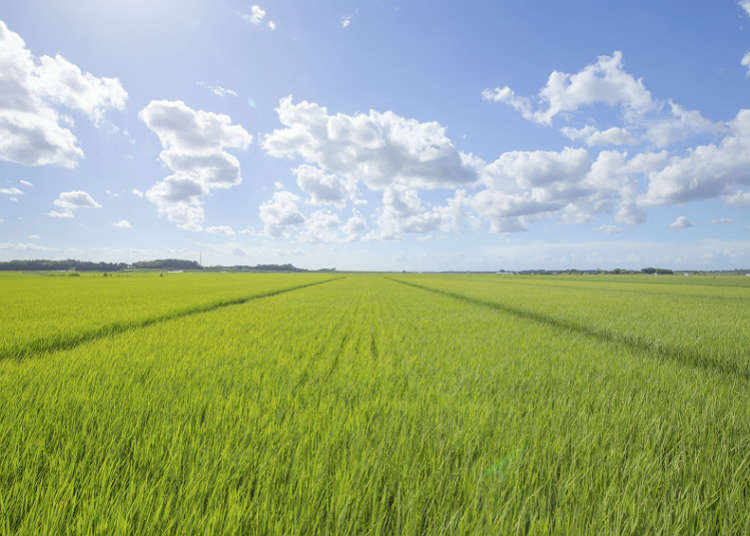
Japan has been a major agricultural country with the great majority of the population engaged in agriculture since ancient times. Although modernization decreased the number of farmers, there are still many places where you can enjoy the peaceful sight of rice fields, the staple food in Japan.
Farm villages in Japan
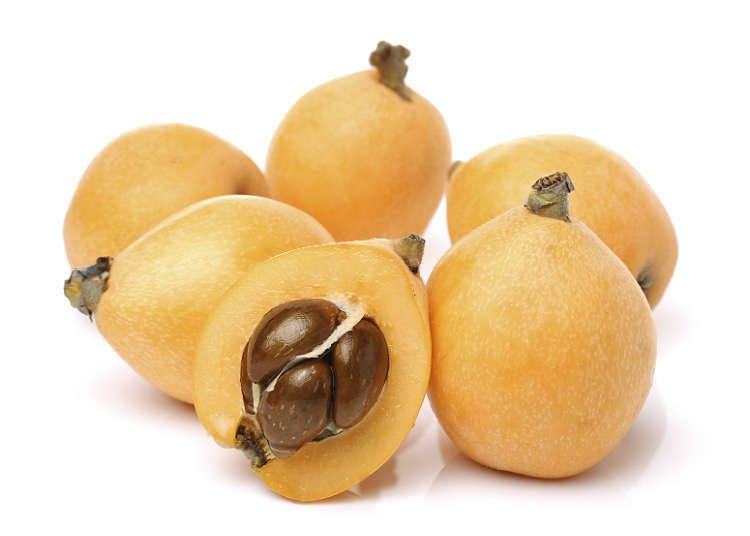
Generally, farmers' houses are located near their farm land, especially near their paddy fields. In most farm villages, all the infrastructures including the water and sewage system, schools and post offices are within their village. Each area produces different products. In Hokkaido, they grow potatoes on a massive scale on flat land. As for the surrounding Kanto area, agriculture is active in Tochigi and Ibaraki, fruits like loquats (photo) and peanuts are produced in the Boso area in Chiba where the climate is warm.
Farm villages in the past
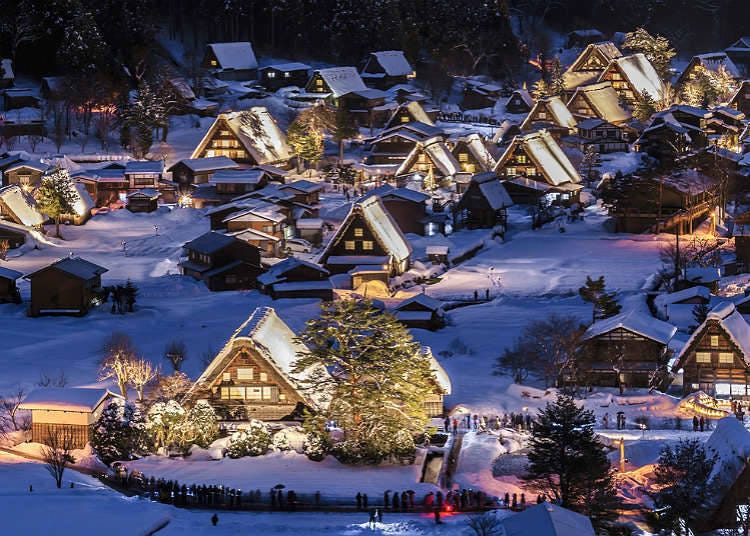
Agriculture is considered to have started as early as in 300 BC. At that time, villages generally developed along rivers where it was easy to draw water. After the Edo period, irrigation systems were installed, and as paddy fields expanded, beautiful pastoral landscapes were formed. In the Shirakawago area (photo) in Gifu, the beautiful scenery of traditional Japanese farm villages has been preserved. The triangle-shaped thatched roofs, Gasshou zukuri are one of such characteristics. There are some thatched houses that have been preserved in Higashiiya, Miyoshi-shi in Tokushima.
Beautiful sceneries in farm villages
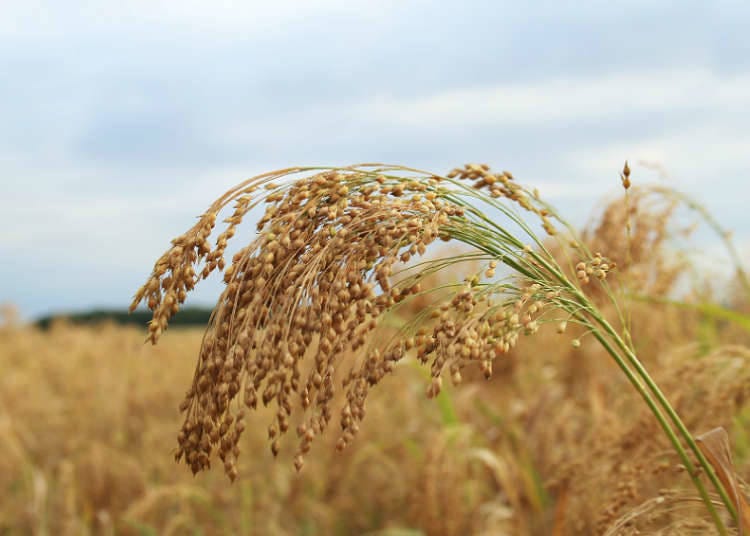
Rice, the staple food of the Japanese is generally planted in May and harvested in September. You can see young rice plants set in the paddy fields during the rice-planting season, green rice plants growing in July, and the golden color in the ears of ripening rice plants after September. Rice is grown not only on a level field, but also on a slope called Tanada (terraced paddy-fields). Tanada are found in the Tokai region and further south, including Fukushima Shinden in Nagano, and Yotsuya Senmaida in Aichi.
Farm villages of today

Now the agricultural population in Japan is aging rapidly, and depopulation is progressing in mountain villages. There is an increasing number of villages called Genkai shuraku, which have more than half of the population being 65 years of age or older. They have various problems, including the increasing number of vacant houses, and difficulty in getting medical care and going shopping.
Farmers with second jobs and an increase in the number of people moving out of the villages
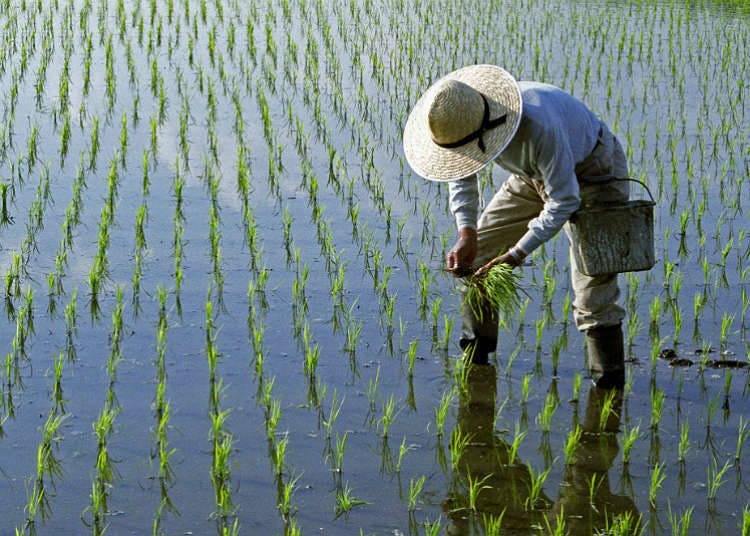
It is said that more than 70 percent of the agricultural population make money from a job besides farming in recent years. Some farmers are employed by companies and do farming on weekends. Others gain incomes from managing properties including apartments. Also, there seems to be people who go to work in the cities during winter when they can't grow any crops. In consideration of the decline of agriculture and fishery as well as the decrease of population in villages in the countryside, the government supports the regional cooperation activities run by local communities. As a result, young people who take an interest in moving to the countryside and engaging in agriculture have started increasing.
Sightseeing in farm villages

Most farm villages in Japan are located in places where public transportation is not developed. So, it's more convenient if you go by car. Each region has rest facilities for drivers called Michi-no-eki, where local specialties particular to that region are sold. Also, you may be able to stay at a farm house, so if you want to know more about the farm villages, take advantage of that opportunity.
- Category
*Prices and options mentioned are subject to change.
*Unless stated otherwise, all prices include tax.
Popular Tours & Activitiess
Recommended places for you
-

Kanzenkoshitsuyakinikutabehodai Gyugyu Paradise Sannomiya
Yakiniku
Kobe, Sannomiya, Kitano
-

Kambei Sannomiyahonten
Yakiniku
Kobe, Sannomiya, Kitano
-
Goods

Yoshida Gennojo-Roho Kyoto Buddhist Altars
Gift Shops
Nijo Castle, Kyoto Imperial Palace
-

Jukuseiniku-to Namamottsuarera Nikubaru Italian Nikutaria Sannomiya
Izakaya
Kobe, Sannomiya, Kitano
-

ISHIDAYA Hanare
Yakiniku
Kobe, Sannomiya, Kitano
-
Appealing

Rukku and Uohei
Izakaya
Sapporo / Chitose
-

See Asakusa and Tokyo Skytree® in a New Light at the "Také Akari" Festival (Winter 2025-2026)
by: Guest Contributor
-

Fine Dining on Rails? Japan Announces Stunning NEW 'Laview' Restaurant Train
-
Ad

Just 2 Hours from Tokyo! Enjoy Ibaraki’s Breathtaking Ocean Views, Flowers & Autumn Leaves on Private Tours
-
Ad

Okinawa Travel Troubles? Guide to the MCC Hotline for Illness and Weather Emergencies
-

(12% OFF KKday Coupon) Mt. Fuji Autumn Leaves, Powder Snow & More! 15 Best Tours to Experience Japan in Fall & Winter
-
Ad
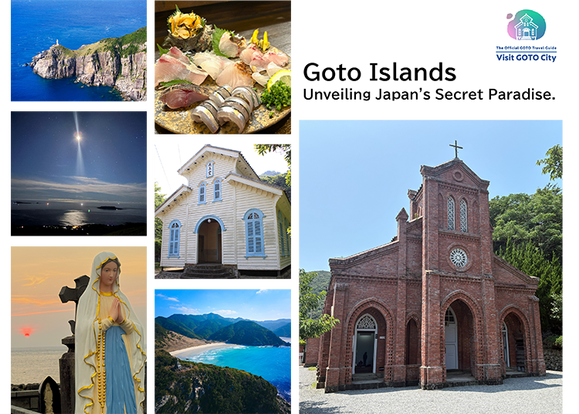
Walk in the Footsteps of Believers: A 4-Day Pilgrimage Across Goto City
by: Yohei Kato
-

Racing Across Japan in the Joetsu Shinkansen: From Tokyo to Niigata's Sake Country In Style
-

Dakigaeri Gorge: Stroll Beside Aqua-Blue Streams and Brilliant Autumn Leaves in Akita
by: Guest Contributor
-

Kaminoyama Onsen Guide: Best Things to Do in Japan's Samurai Town!
-

Sapporo New Chitose Airport (CTS): Complete Guide to Restaurants, Souvenirs, Shopping & More!
-

5 Best Hotels Near Universal Studios Japan (Osaka): Top-Rated Places to Stay
by: WESTPLAN
-

Why Osaka Tennoji Zoo is So Popular with Foreign Tourists (Guide & Highlights)
- #best sushi japan
- #what to do in odaiba
- #what to bring to japan
- #new years in tokyo
- #best ramen japan
- #what to buy in ameyoko
- #japanese nail trends
- #things to do japan
- #onsen tattoo friendly tokyo
- #daiso
- #best coffee japan
- #best japanese soft drinks
- #best yakiniku japan
- #japanese fashion culture
- #japanese convenience store snacks












